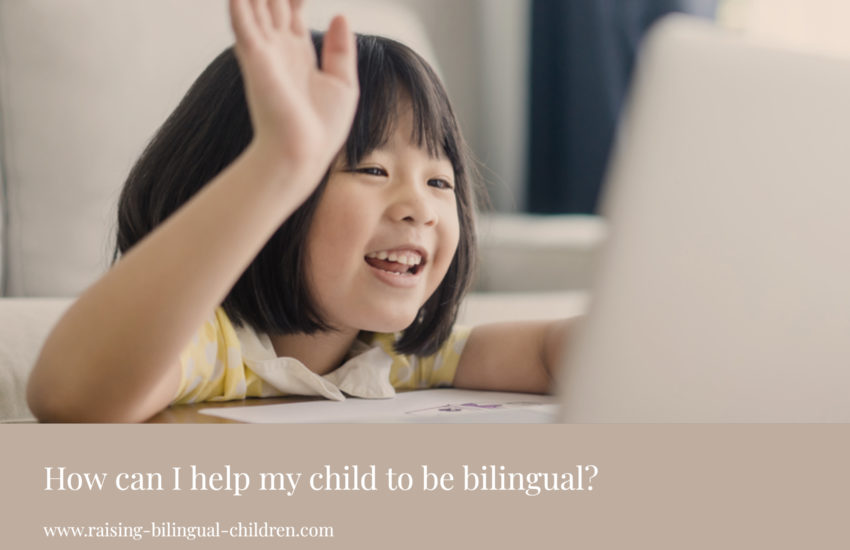Whether you speak a second language or not, it’s extremely challenging to ensure your child learns a second language. I speak to parents every day that say, “I speak Spanish, and I try to speak to my children in Spanish, but they only respond in English!” or, “I don’t speak a language other than English. How in the world do I help my child learn Japanese?”
Don’t worry. You’re not alone. And although it is not easy, there is a specific strategy you can take to ensure that your child knows a second language.
There are three different types of actions: small, medium and big actions, you can take as a parent to ensure your child picks up a second language, or at least has a very strong base. Some of these actions are extreme, and you might say to me, “I can’t do that! Where would I find the time/money/help/etc?” But I will also suggest less demanding actions that can be taken that, over time, will accumulate to big changes in language acquisition. You are free to design your own strategy, the more interaction the better, for language development.
Important: Biggest mistake I see is waiting to start kids when they’re older. Language starts to develop in the womb, so I urge you to start immersing your child within the first year of life.
Big Actions – Long term Immersion
First, you need to know what immersion really is. Immersion is interacting with the language, or living in it. You don’t need a special teacher to do this with children. You just need someone to hang out with your child that won’t speak English and who will stay in the target language.
Options for immersion:
Immersion camp in the USA: All activities will be in the target language, but unfortunately, the kids around them will speak English. Good option, but not great option. Best option if you cannot go abroad.
Camp Abroad: An even better option is a fun camp not related to language, but in the country where they speak that language. You can have a little vacation, while your child is at an art camp in Mexico City, Barcelona, or Lima.
You can immerse as a family and go to another country and take classes. The kids go to kid classes and the parents go to parent classes. The smaller the classes, the better. International even better, because maybe the kids’ first language is Japanese, French or Russian, and so the kids must speak in the new language!
If you have friends or family in another country, you could ask to do an exchange. You send your kids for a couple of weeks and they send theirs. Or one parent goes to the new country with the children, and one parent stays. If you feel comfortable, send your child at a young age to stay with friends or family for a month, or go with them.
Medium Actions – Immersion is still best
Now, you may be saying that you are not prepared for the big actions, so you prefer something more manageable. Or maybe you don’t have the budget to go visit friends or family in another country, or have the budget for an immersive camp in another country. Fair enough!
There are short immersion camps in your own country as well. In the summer, you can often do half day camps or Saturday camps during the school year. Even better, you could make friends with someone at your school who speaks a second language. In this way, you could do an exchange. Your child could do a sleep-away night at their house to begin to hear the language. You could ask the family to try to interact with your child. This is not highly effective, as it’s not their job, but it is an added way to interact with the language a bit more.
Another medium action (yet highly effective) is to get a babysitter (but you don’t have to leave) that will play with your child from a very young age in the target language. By doing this from a very young age (6 months or more), your child is not confused or frustrated, because all language is fairly new. I would suggest this as many hours a week as you can. The great part is that you do not have to hire an expert, simply a teenager that wants to make extra money by talking to a baby.
Small Actions
There are online language classes for kids and these can be taken at any time – the schedule is very flexible. At this age, I reiterate, you just need someone to play with your child and interact with images, pointing, some kind of action with words associated with it. This is how they learn any language: image, word, context of situation. You do not have to spend a lot of money on this.
At our online Spanish immersion school for kids, we use Zoom for small group classes and any platform for private lessons. The instructor is the same throughout the course, which allows them to really bond and get to know your child. I think that is really critical for the children having fun and trusting the teacher. Kids like routine and stability.
Most classes include a lot of dancing and singing, games and chatting, so we try to make it as much like in person classes as possible. We even ask the kids to have colors and blank paper for activities they build in classes or drawings to incorporate different activities.
You can hire a bilingual tutor and get a group of your friends together to share the price. Get someone to come for 1 hour, 3 days a week (more if you can!) and pay the teenager or babysitter for the hour to play with the 3-6 kids.
You can also learn short phrases and start incorporating those into your everyday vocabulary. Like, “Do you want this?”, “Do you like it?”, “Where is it?” and other common phrases. Your child will not even know it is another language. They will simply associate it with what you are trying to express.
You can also learn simple songs in the new language and put movements to the song that correlate to what it means. On youtube there are many children’s songs to learn.
I am very excited for you to begin this second language acquisition journey with you and your family. Even if you start with the smallest of changes, this will aid in the development of your child’s second language.
Guest article written by Micah Bellieu
Micah Bellieu has been researching second language acquisition since 1998. Since that time she created The Bellieu Method,, which focuses on getting clients fluent based on insanely relevant class themes, focusing on what they truly need to be able to say, understand, read and write. She used her method to get fluent in Spanish, French and Japanese. She then started Fluency Corp (language training for corporations) in 2009, working with clients such as American Airlines, Chevron and other large corporations globally. She also started TruFluency for individuals wanting to improve fluency in any language, and also TruFluency Kids!, which serves 4 – 12 year olds nationally, teaching Spanish online.

